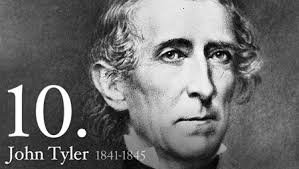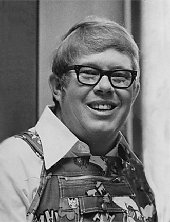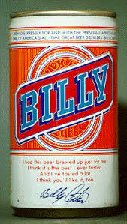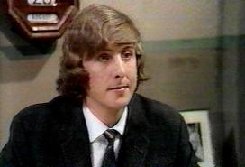We started at 35º and went to 33º, 34º, 33º. We topped at 60º after the clouds left and the sun came out......

A potato chip (North American English; often just chip) or crisp (British and Irish English) is a thin slice of potato that has been deep fried, baked, or air fried until crunchy. They are commonly served as a snack, side dish, or appetizer. The basic chips are cooked and salted; additional varieties are manufactured using various flavorings and ingredients including herbs, spices, cheeses, other natural flavors, artificial flavors, and additives.
Potato chips form a large part of the snack food and convenience food market in Western countries. The global potato chip market generated total revenue of US$16.49 billion in 2005. This accounted for 35.5% of the total savory snacks market in that year ($46.1 billion).
History
The earliest known recipe for something similar to today's potato chips is in William Kitchiner's book The Cook's Oracle published in 1817, which was a bestseller in the United Kingdom and the United States. The 1822 edition's recipe for "Potatoes fried in Slices or Shavings" reads "peel large potatoes... cut them in shavings round and round, as you would peel a lemon; dry them well in a clean cloth, and fry them in lard or dripping". An 1825 British book about French cookery calls them "Pommes de Terre frites" (second recipe) and calls for thin slices of potato fried in "clarified butter or goose dripping", drained and sprinkled with salt. Early recipes for potato chips in the US are found in Mary Randolph's Virginia House-Wife (1824) and in N.K.M. Lee's Cook's Own Book (1832), both of which explicitly cite Kitchiner.
A legend associates the creation of potato chips with Saratoga Springs, New York, decades later than the first recorded recipe. By the late nineteenth century, a popular version of the story attributed the dish to George Crum, a cook at Moon's Lake House who was trying to appease an unhappy customer on August 24, 1853. The customer kept sending back his French-fried potatoes, complaining that they were too thick, too "soggy", or not salted enough. Frustrated, Crum sliced several potatoes extremely thin, fried them to a crisp, and seasoned them with extra salt. To his surprise, the customer loved them. They soon came to be called "Saratoga Chips", a name that persisted into the mid-twentieth century. A version of this story was popularized in a 1973 national advertising campaign by St. Regis Paper Company which manufactured packaging for chips, claiming that Crum's customer was Cornelius Vanderbilt. Crum was already renowned as a chef at the time, and he owned a lakeside restaurant by 1860 which he called Crum's House. The "Saratoga Chips" brand name still exists today.
Production
In the 20th century, potato chips spread beyond chef-cooked restaurant fare and began to be mass-produced for home consumption. The Dayton, Ohio-based Mikesell's Potato Chip Company, founded in 1910, identifies as the "oldest potato chip company in the United States". New Hampshire-based Granite State Potato Chip Factory, founded in 1905 and in operation until 2007, was one of America's first potato chip manufacturers.
Health concerns
Most potato chips contain high levels of sodium, from salt. This has been linked to health issues such as high blood pressure. However, researchers at Queen Mary University of London in 2004 have noted that a small "bag of ready-salted crisps" contains less salt than a serving of many breakfast cereals, including "every brand of cornflakes on sale in the UK."
Some potato chip companies have responded to the long-standing concerns by investing in research and development to modify existing recipes and create health-conscious products. PepsiCo research shows that about 80% of salt on chips is not sensed by the tongue before being swallowed. Frito-Lay spent $414 million in 2009 on product development, including development of salt crystals that would reduce the salt content of Lay's potato chips without adversely affecting flavor.
Unsalted chips are available, e.g. the longstanding British brand Salt 'n' Shake, whose chips are not seasoned, but instead include a small salt sachet in the bag for seasoning to taste. Many other popular brands in the United States, such as Frito-Lay, also offer such a product.
One health scare related to potato chips focused on acrylamide, which is produced when potatoes are fried or baked at high temperatures. This discovery in 2002 led to international health concerns. Subsequent research has however found that it is not likely that the acrylamides in burnt or well-cooked food cause cancer in humans; Cancer Research UK categorizes the idea that burnt food causes cancer as a "myth".
In August 2008, California Attorney General Jerry Brown announced a settlement with Frito-Lay, Kettle Foods, and Lance Inc., the makers of Cape Cod Potato Chips, for violating the state's Safe Drinking Water and Toxic Enforcement Act. The state had alleged in 2005 that potato chips from these companies failed to document that they contained high levels of acrylamide, which is listed by California since the 1990s as a carcinogen. These companies paid fines and agreed to reduce acrylamide levels to be under 275 parts per billion. Many potato chip manufacturers attempt to remove burned and thus potentially acrylamide-rich chips before the packaging process. Large scanners are used to eliminate chips worst affected by heat.
- 1/4 cup (1/2 stick) butter
- 1 1/2 pounds beef round steak, cut into 1-inch chunks
- 2 large onions, quartered
- 2 potatoes, peeled and quartered
- 4 carrots, cut into 1-inch chunks
- 2 cups water
- 1 3/4 cups beef broth
- 1/2 teaspoon thyme leaf
- 1 teaspoon paprika
- 1 teaspoon salt
- 1/2 teaspoon black pepper
- 2 tomatoes, chopped
- In a soup pot, melt butter over high heat. Add steak and onions and cook 6 to 8 minutes, or until meat is browned, stirring frequently. Add remaining ingredients except tomatoes, cover, and reduce heat to low. Simmer 45 minutes.
- Add tomatoes and simmer, uncovered, 25 to 30 minutes, or until beef is tender and sauce is thickened.
****Serve this over medium egg noodles and you won't miss any of the hearty sauce!
HOW TO OBSERVE
- Thank a Vietnam Veteran.
- Buy them a drink or lunch.
- Visit a local memorial. Volunteer to help organize events.
- Support a veteran’s organization in your community. Volunteer and offer your skills.
- Watch a Vietnam War documentary such as The Vietnam War: A Film by Ken Burns and Lynn Novick or Last Days in Vietnam directed by Rory Kennedy or Vietnam Nurses by Timeline.
- Read about the Vietnam War in books like Vietnam – A History by Stanley Karnow or They Marched into Sunlight: War and Peace, Vietnam and America, October 1967 by David Maraniss or The Quiet American by Graham Green and Robert Stone.



















